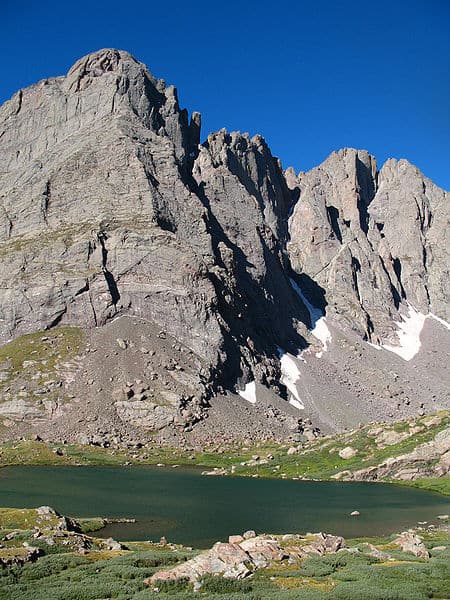 Here’s a piece in New West today.
Here’s a piece in New West today.
Here are some quotes:
STATE OF THE FOURTEENERS
As far as the peaks themselves are concerned, however, the USFS proposal is coming from a real place. The ecosystem at 14,000 feet is very fragile and overuse is a true problem in certain areas, particularly those summits that have easy, almost drive-up access.
“There is plenty of scientific data that shows how the effect of a human walking across the tundra is very different from someone walking across the grass in Denver or Fort Collins,” explains Ryan Hollamby, a graduate student in the Department of Geography and Environmental Studies at the University of Colorado at Colorado Springs, who has spent the past year climbing almost every one of Colorado’s 54 fourteeners. “The high country ecosystems are very fragile.”
In particular, Hollamby says, crowds at high elevations contribute greatly to increased erosion and overall pollution, both in the form of human waste and general hiker garbage. Beyond that is the sometimes unseen impact that use can have on animal movements.
“When we see bighorns down by campsites, people don’t think about how they’re changing the animals’ movements and their behaviors,” Hollamby says, explaining that many high country species are attracted to the salt found in human urine. “But we’re altering their patterns more than many people realize by not practicing good, ethical hiking.”
TOWARD A SOLUTION
But will a fee help solve the problem? So far, the consensus is “no.” Although something needs to be done to better protect the fourteeners, most watchers feel that a fee is not the best way to go about it.
“Any person who goes up [to the basin] on a busy weekend will understand why the Forest Service is doing what they’re doing,” says Hollamby, “It’s a mess up there. But there are better ways to combat it – making approaches longer, making trailheads less accessible.”
Is it about regulating people’s behavior or just keeping them out? A fundamental question for 21st Century public land management.
I think it also raises the broader question of which of the costs of public land management the Forest Service is going to cover in their budget and which it is going to pass on.
The answer to that question lies in the differentiation between what is a purely public good (homeland security is an example), what is a merit good (where both individuals and society gain), and what is a private good (consumptive goods are the most common examples, where there is no public benefit). To me it seems that the Forest Service is treating more and more of their responsibilities as merit goods and therefore asking folks to cover part of the costs.
In doing so, the Forest Service has raised all manner of social justice issues. That is, who receives the benefits, who can afford to buy the ecological services provided, and who can’t.
Bill- do you mean consumptive good in the second sentence in your second paragaph? I think a link or definition that better explains merit and private might be helpful to me and other rec fee newbies.
I can’t think of a use that doesn’t have some kind of public benefit. For example, grazing has a public benefit (ranches stay in ranching and provide open space). Even oil and gas has a public benefit- energy for people’s homes.. so please help me understand better what is meant by these concepts.
Sharon, I don’t think it is just consumptive goods only although I guess it depends on how you define consumptive (as compared to, say, sustainable).
My favorite description of the difference between goods is from Dustin, More & McAvoy (“The Faithful Execution of Our Public Trust: Fully Funding the National Parks
Through Taxes”) Journal of Park and Recreation Administration, Winter 2000. Here’s the footnote from that article:
The terms “public good,” “merit good,” and “private good” lack precise definition and are subject to varying usages, generally based around notions of both social worth and excludability. As we use them here, “public good” refers to something so meritorius that we choose as a society to provide it at public expense; education and national defense are examples. “Merit goods” have some social merit so that, while some public subsidy is appropriate, private individuals also are expected to bear a portion of the cost. “Private goods” are those for which the private individual bears all the cost (see “The Conceptual Basis and Objectives of Pricing” in Howard &: Crompton, 1980, for a full discussion.).
Interestingly, education is feeling more and more the pressure to become a merit good. University and college education is very much privatized as states reduce drastically their contribution and students must pick up the difference in tuition.